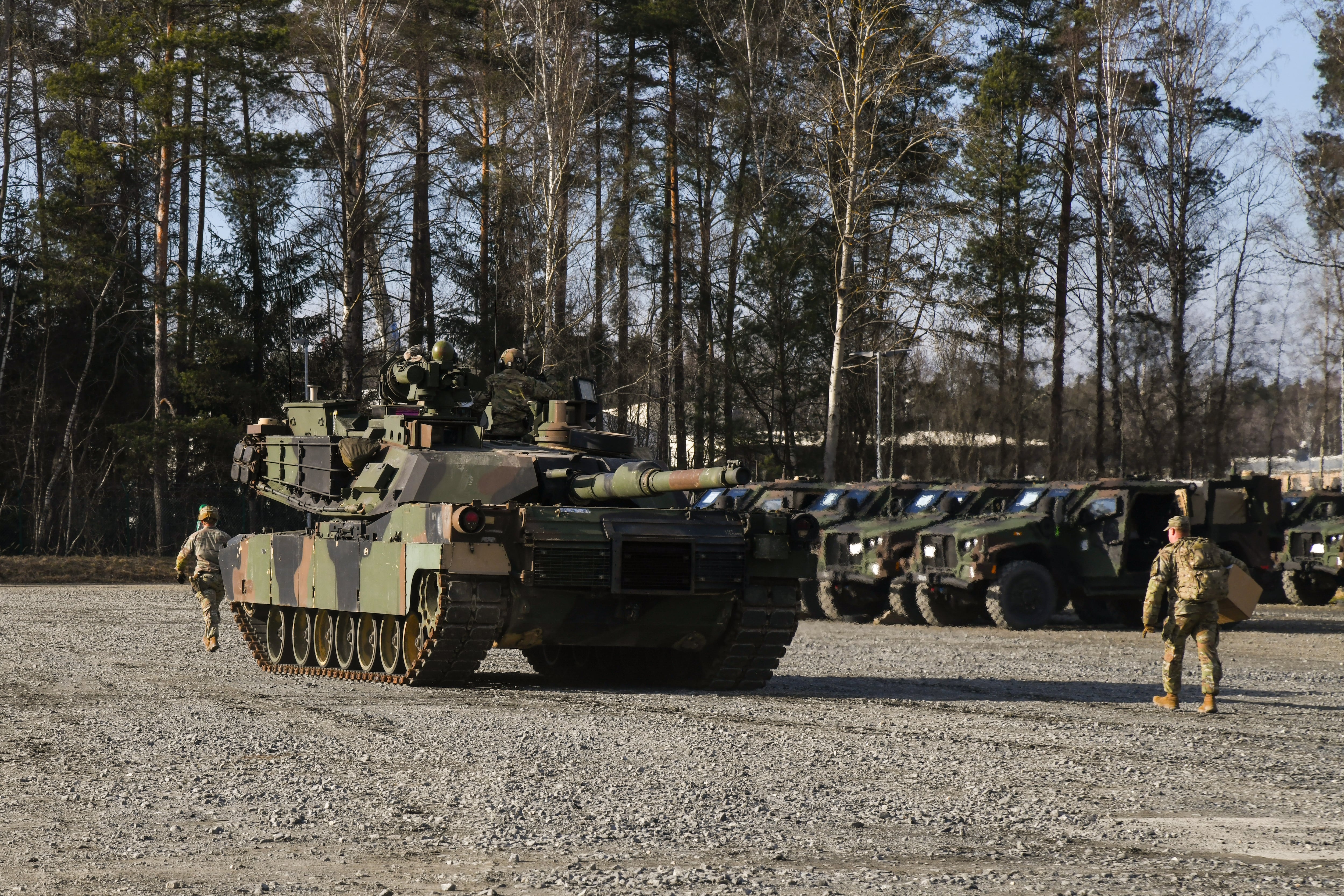The Army will no longer rotate tank brigades to South Korea beginning this fall, the service acknowledged in a press release Thursday afternoon.
Instead, the Army will now rotate a Stryker brigade combat team to Korea every nine months. It will also maintain the existing armored brigade combat team’s worth of tanks and equipment on the peninsula in a similar manner to the pre-positioned tank stocks in Europe that allowed a tank brigade to rapidly deploy out of Fort Stewart, Georgia, in response to Russia’s renewed invasion of Ukraine.
Removing the rotational armored brigade is the latest step in a gradual drawdown of American ground firepower on the peninsula, too, although a permanent air cavalry squadron was activated there in May.
Before it was deactivated in 2015, the 2nd Infantry Division’s 1st ABCT “Iron Brigade” was permanently stationed there. In the years since, the Army has maintained a rotational tank brigade commitment — until now.
Reduced OPTEMPO for ABCTs?
The change to Strykers is also a tacit acknowledgement that the service’s armored brigades may be overcommitted after the Ukraine crisis led the Army to increase its European armor commitment from one brigade combat team to three.
At a March town hall with family members of the 3rd Infantry Division’s 1st ABCT, which had just deployed to Europe less than six months after returning from a Korea rotation, Sergeant Major of the Army Michael Grinston acknowledged “how this math is going.”
An Army official told Army Times that with the departure of 1st Infantry Division’s 1st ABCT the service currently has two armored brigades in Europe. And the Army’s long-term rotational commitments now include an ABCT and a new additional rotational brigade in Romania.
A Defense Department fact sheet on the changes indicated that an infantry brigade could fill the Romania commitment in the future, though.
RELATED

Force structure expert Mark Cancian of the Center for Strategic and International Studies think tank told Army Times in March that unless the service reduced its commitments, “the [operational tempo] would be very severe.”
Removing the Korea ABCT rotation will likely ease some of that pressure on the service’s tank force, buying time for units to modernize their equipment in between rotations.
The Army’s 11 ABCTs would have faced a significant challenge attempting to continue manning the Korea rotation in addition to three brigades in Europe, though it’s still unclear whether the service will be required to maintain its current posture in Europe.
An Army spokesperson did not immediately respond to a query seeking clarification on the service’s commitments after President Joe Biden announced changes to Europe force posture on Wednesday.
Davis Winkie covers the Army for Military Times. He studied history at Vanderbilt and UNC-Chapel Hill, and served five years in the Army Guard. His investigations earned the Society of Professional Journalists' 2023 Sunshine Award and consecutive Military Reporters and Editors honors, among others. Davis was also a 2022 Livingston Awards finalist.




